
Bird attacks on humans are usually an action intended to protect territory or the young. It’s rarely pure aggressive. It’s not uncommon for a bird to attack because it mistakes something (like a person) for food.
There are over 5,000 reported attacks by crows on humans. On a beach island in Massachusetts, a woman found herself occasionally dive-bombed by squawking birds. She was eventually forced to wear hats. (Some birds remember faces!)
Raptor-studying ornithologists wear construction hats on the job as birds will defend themselves against invaders. Sometimes, Colorado joggers need to wave at the air to combat the shenanigans of red-winged blackbirds.
Birds have the potential to be dangerous to humans. Birds have been known to dive-bomb people who come within striking distance of their nest or other habitats. The territorial creatures will defend themselves against a perceived threat, humankind or otherwise.
Let’s take a look at nine birds that attack humans, why they attack, and if there’s any way to avoid their dangerous nature.
#9: Mockingbirds
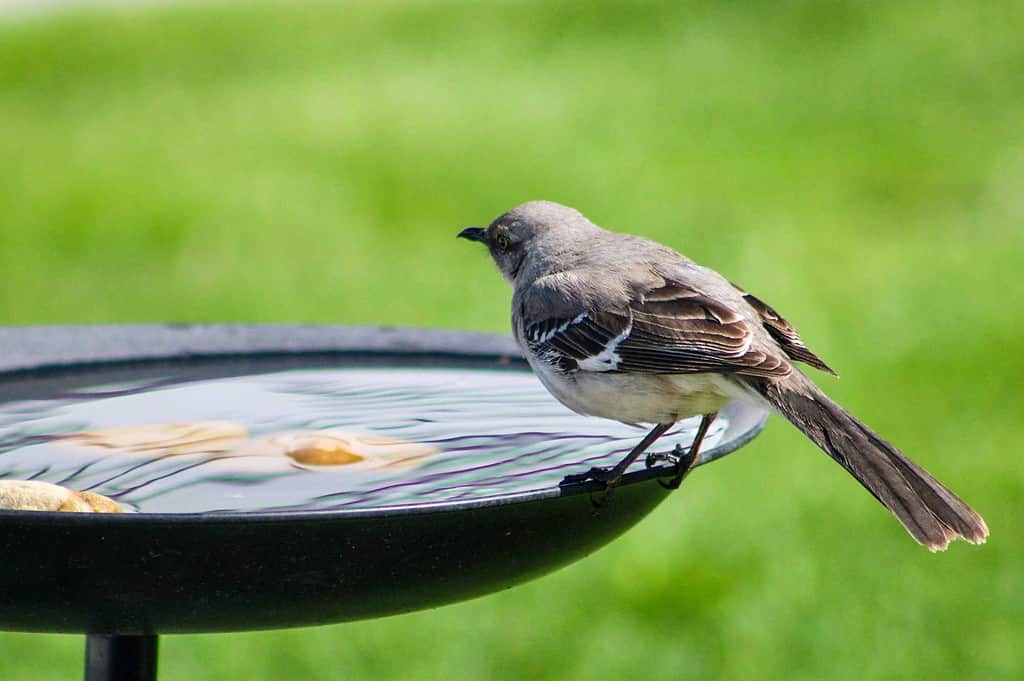
©Jaclyn Vernace/Shutterstock.com
It’s not common but not unheard of that mockingbirds go after humans and other animals. Like many of these cases, the creature goes bonkers if they perceive a threat to their territory. The birds have claws and beaks and use them effectively as weapons. While no one’s getting killed, the birds are leaving noticeable damage to human skin.
On the campus at the University of Florida in Gainesville, mockingbirds attack crows and cats regularly. The birds normally ignore people completely but do remember individuals. These are people the bird previously saw as threats to their nests. The best way to stay off the mockingbird’s radar is to avoid its nest and be mindful of its territory.
#8: Swallows
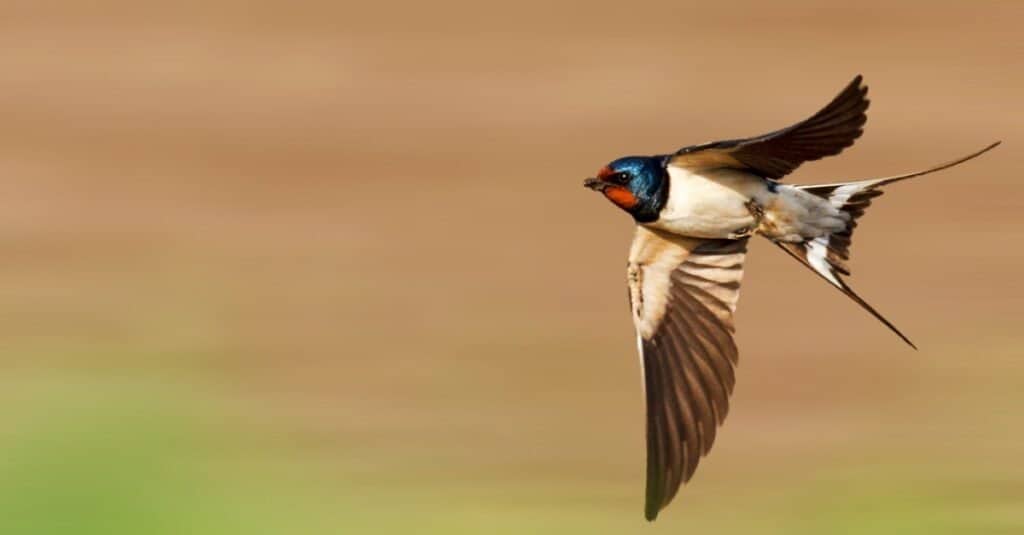
©iStock.com/drakuliren
Normally not a physical menace to society, the swallow does go after people on rare occasions. They swoop down unexpectedly on people standing in the wrong place at the wrong time. The swallows instinctively and naturally go after potential predators to their eggs and nests.
Typically, the swallow swoops in, preferring to scare away people, cats, dogs, and other animals. Unlike many birds, you get far enough away from the swallow, the bird goes in the other direction. Besides their attacks, swallows are something of a community nuisance. Droppings create health and sanitation concerns and the damage they commit on a property can require time-consuming and expensive repair and clean-up.
#7: Magpies

©iStock.com/JMrocek
Magpies are not prone to threaten people. Curious and intelligent, magpies are ready to go for it if they feel they or their nests are in danger. There are rumors that magpies are also gypsy thieves! But research shows shiny objects don’t appeal to the birds.
Closely related to crows, magpies are intelligent and one of the few animals that know they’re looking in mirrors. If a magpie has a nest in the area and you’re aware of the fact, it’s best to try not getting too close or attempting to shoo a magpie away. If the bird feels you’re in their territory, there’s a good chance they’ll go after you.
#6: Crows
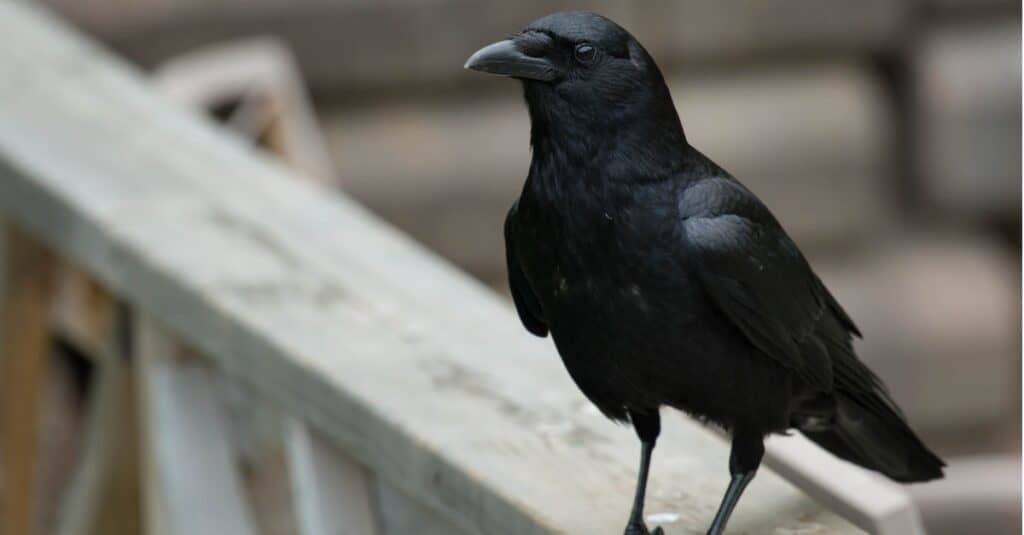
©iStock.com/PaulReevesPhotography
In cartoons, crows tend to be mischievous and aggressive. The behavior is based on fact. The crow is pretty fearsome and can be pushy. They’re notorious for dive-bombing when they feel threatened. Worse, since they perform in groups, their allies may join in.
Crows usually circle overhead then come in fast and low. You might be standing between them and a nearby meal. (They’re famous for going after a picnic table.) Crows may want something in your garden or field and you’re in the way. Some unsuspecting victims are just walking their dogs. Now, crows exhibit facial recognition so if you’ve been targeted and dare show up again, watch out. It’d be a good idea to simply avoid their territory.
#5: Canadian Goose

©iStock.com/Wayne Marinovich
The Canadian Goose is a funny bird. Between April and June, these geese tend to be more temperamental than the rest of the year. Those months represent nesting season and the female is particularly aggressive and even dangerous when their eggs or goslings get too close to humans. The first line of defense is to chase the perceived nuisance away. This is the case in many areas, especially around golf courses and park ponds.
Once a creature of the wild, the Canadian goose has adapted to public places. They walk and graze and feed in the water, submerging up to the neck. And while the threat of humans can get the Canadian goose’s temper flaring under almost any circumstance — if their young or eggs are in the vicinity — it’s on!
Historically, these birds are known as giant geese and are the largest species of geese in the world. Most adults weigh a whopping 14 pounds and females only weigh slightly less. Although, Canadian geese have a healthy population, in the early 1900’s they were on the brink of extinction. Canadian geese are known for their loud “honks”, their appearance, and their aggressive behavior towards humans.
#4: Gulls
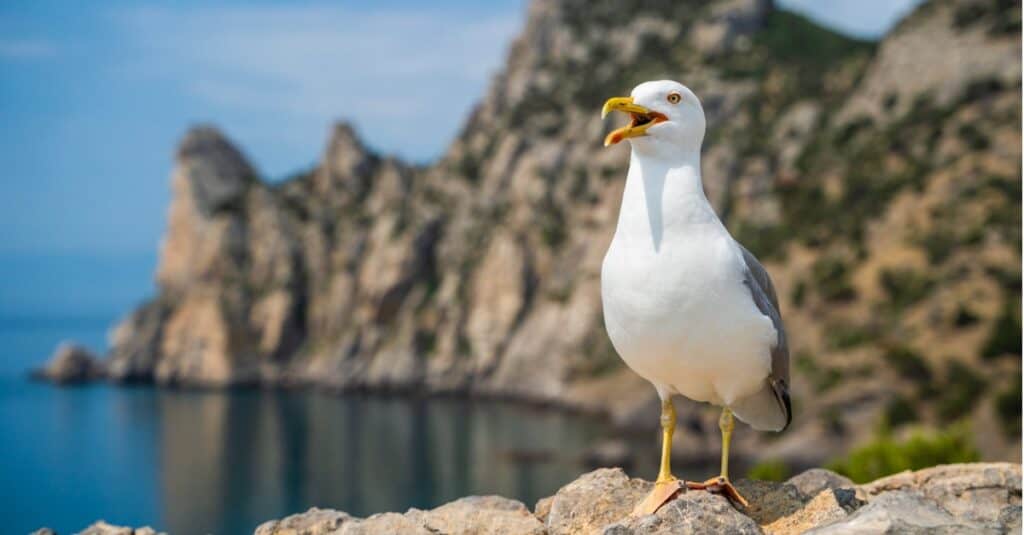
©iStock.com/Evgenyi_Eg
The most likely reasons this bird attacks a human is to defend itself (even if the threat isn’t real), to protect its nest, or because it’s mistaken a human for food. Depending on the locale, gulls can be extremely aggressive, especially around food. Any of these perceived threats are avoidable. Keep your distance at all times, especially near the bird’s nest.
The gull belongs to the Laridae family. There are many species and informally all species tend to get lumped together as seagulls. This is a misconception. The ornithology community doesn’t recognize any species specifically called seagulls.
#3: Owls
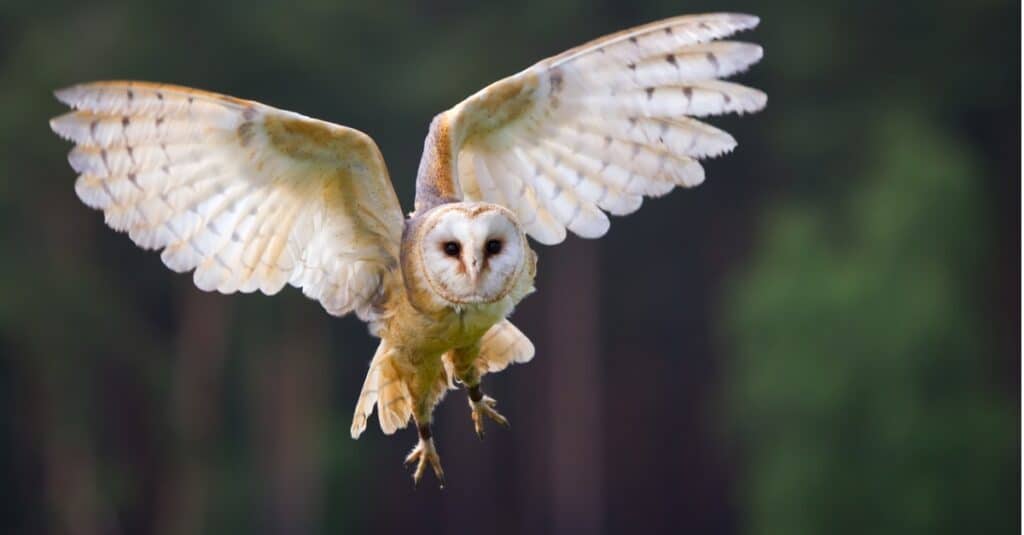
©iStock.com/M-Reinhardt
It probably sounds off-kilter, considering our picture of the owl is of a noble, solitary creature perched quietly in trees, but the owl can be quite dangerous. We may know that they swoop down to capture prey. But, like other animals we see as passive, owls can be incredibly vicious if their family’s threatened. There are also records of owls attacking people in public areas. Thankfully, those incidents are rare.
Owls are zygodactyls. That means they have a pair of forward-facing toes and a pair of backward-facing toes. The difference between owls and other zygodactyl birds is owls can shift the back toes forward for walking and gripping. Those same toes make for powerful weapons. But if you stay away from their nests, you never have to worry about an owl attack.
#2: Cassowary

©iStock.com/DannyIacob
The San Diego Zoo says the cassowary is the most dangerous bird in the world. So, it makes sense that the cassowary made the list of birds that attack humans. Each foot comes with a four-inch claw. With these powerful claws, the cassowary can painfully slice into an animal with a single kick.
The bird’s pretty quick, hitting 31 mph in dense forest. The cassowary’s a large bird, capable of growing up to six feet tall and weighing as much as 130 pounds. Recently, a man in Florida who raised cassowaries was killed by one of his broods. It’s believed the man, who fell suddenly and likely startled the bird, got attacked.
The cassowary is native to Papua New Guinea and Australia.
#1: Ostriches
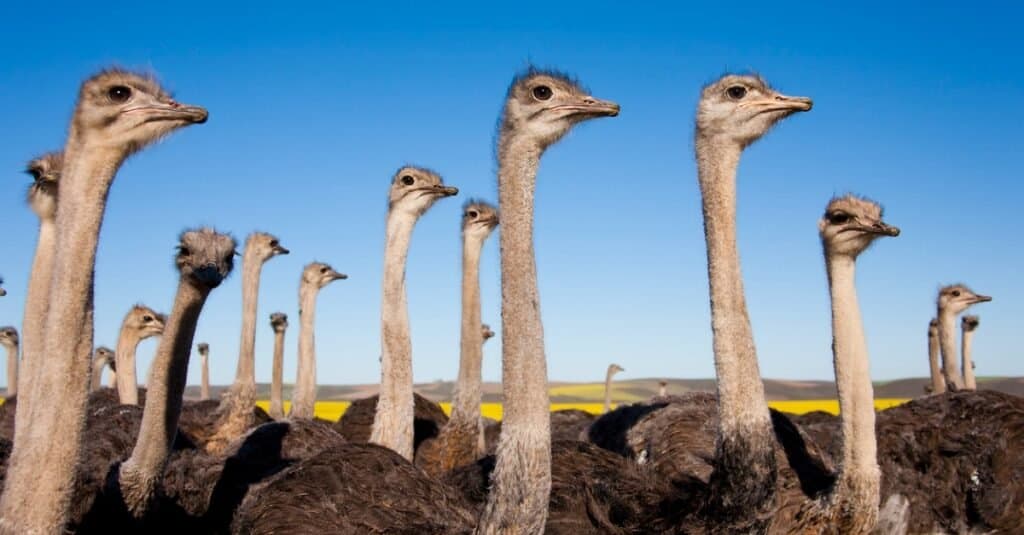
©iStock.com/AndreaWillmore
We know ostriches to have a reputation more for being cowardly than anything. Preferring to run from predators and threats, they are famous for literally hiding their heads in the sand (something they don’t do). But in many parts of the world, the ostrich is a powerful bird whose attacks have resulted in serious injury and fatalities every year.
In the wild, ostriches avoid predators, including humans. But threatened or cornered, the big bird can be dangerous and will attack. In South Africa, ostrich farming is a thriving business and humans deal with feral, wild ostrich populations regularly. So South Africans are quite familiar with the risks of direct contact with the ostrich.
Summary Of The 9 Birds That Attack Humans
| Rank | Bird Species | Wingspan |
|---|---|---|
| 9 | Mockingbirds | 12 – 14 in |
| 8 | Swallows | 12.5 – 13.5 in |
| 7 | Magpies | 2 ft |
| 6 | Crows | 2.5 ft |
| 5 | Canadian Geese | 50 – 73 in |
| 4 | Gulls | 47 – 56 in |
| 3 | Owls | Varies on species (9 in – 6.5 ft) |
| 2 | Cassowaries | 59 – 79 in |
| 1 | Ostriches | 6.5 ft |
What Are the Top 3 Killers of Birds?
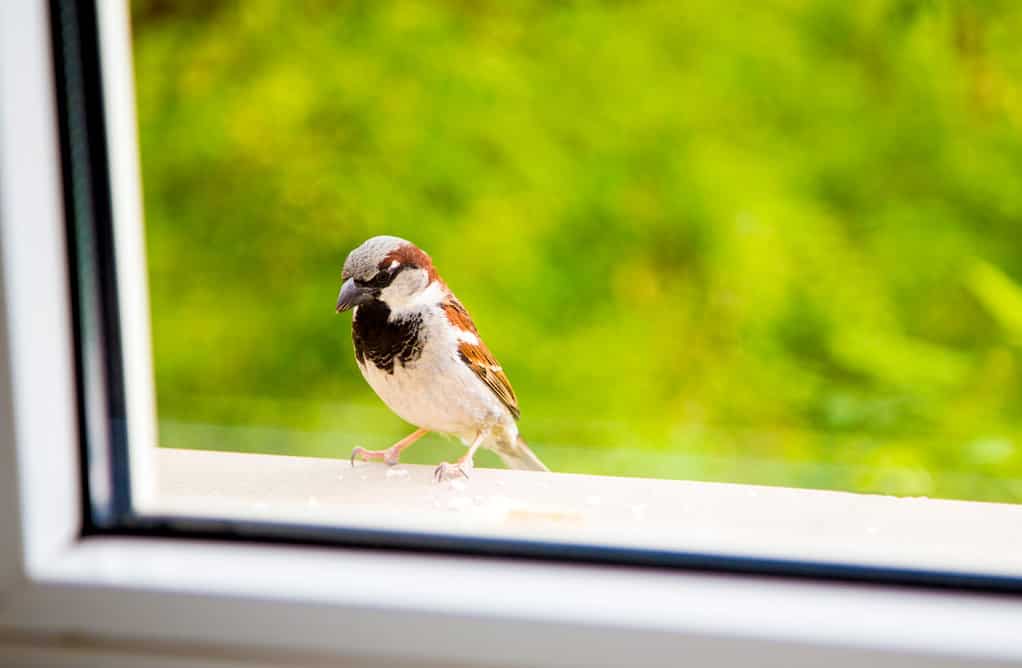
Windows pose an incredible threat to birds as they can not always determine that they are solid objects to avoid.
©Dima Oana Gabriela/Shutterstock.com
While some of the biggest threats to birds are not surprising, some are not so obvious.
Colliding with windows is the number one killer of birds worldwide. Combine the high flight speed of avians and the strength and hardness of windows, and that spells a recipe for trouble for our feathered friends. Some research claims that these types of collisions cause up to one billion birds to meet their demise every year!
We all know that birds are hunted by predators. Cats, both domestic and feral, happen to be responsible for around half a billion bird deaths per year! Cartoon depictions of cats and birds can be funny, but they are actually based on truth.
The next top killer of birds is from wires. This can be from electrocution from electrical wires and also from running into high-tension wires.
The photo featured at the top of this post is © iStock.com/picassos
Thank you for reading! Have some feedback for us? Contact the AZ Animals editorial team.






